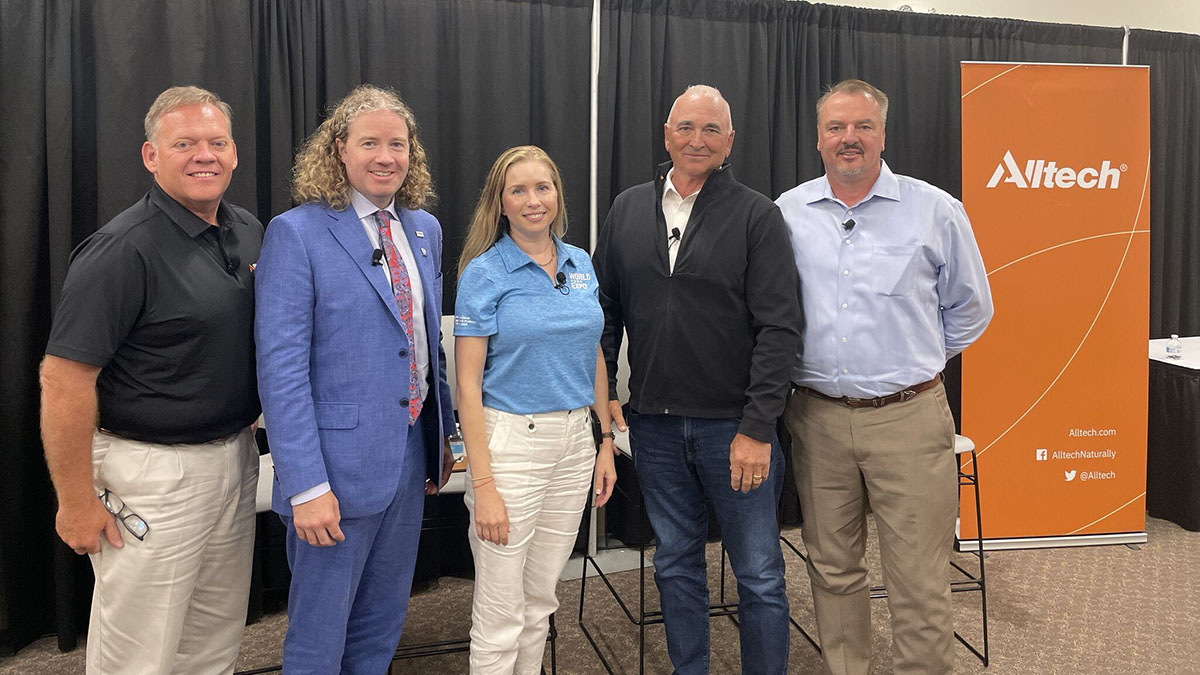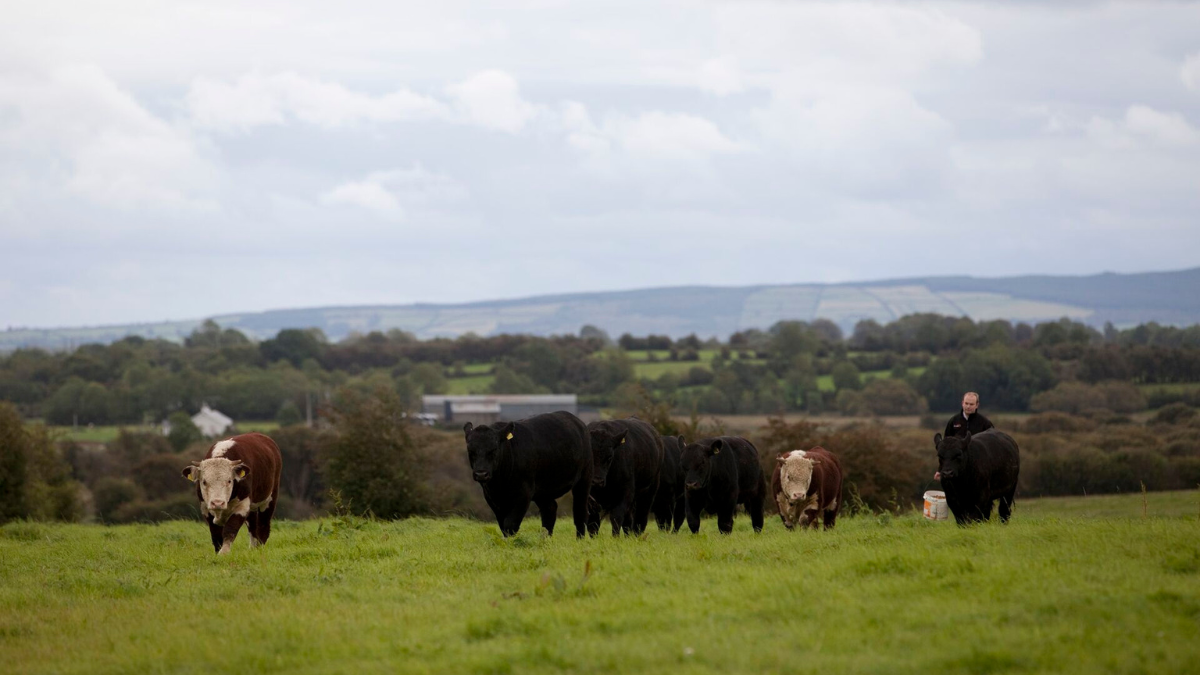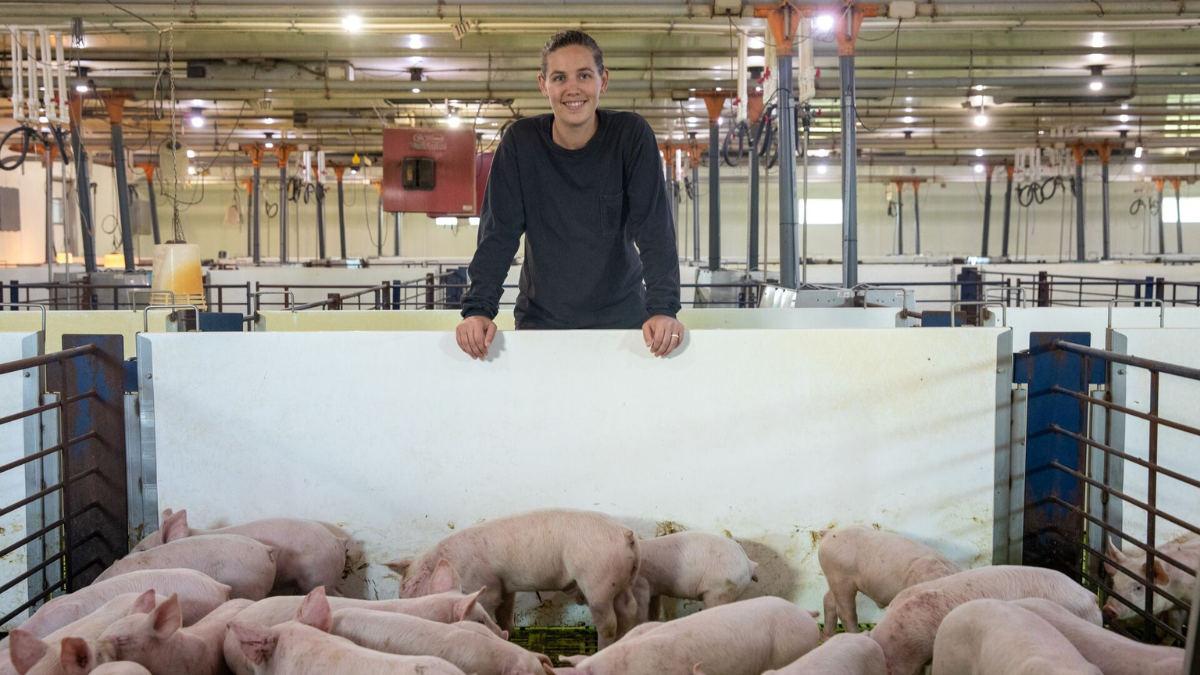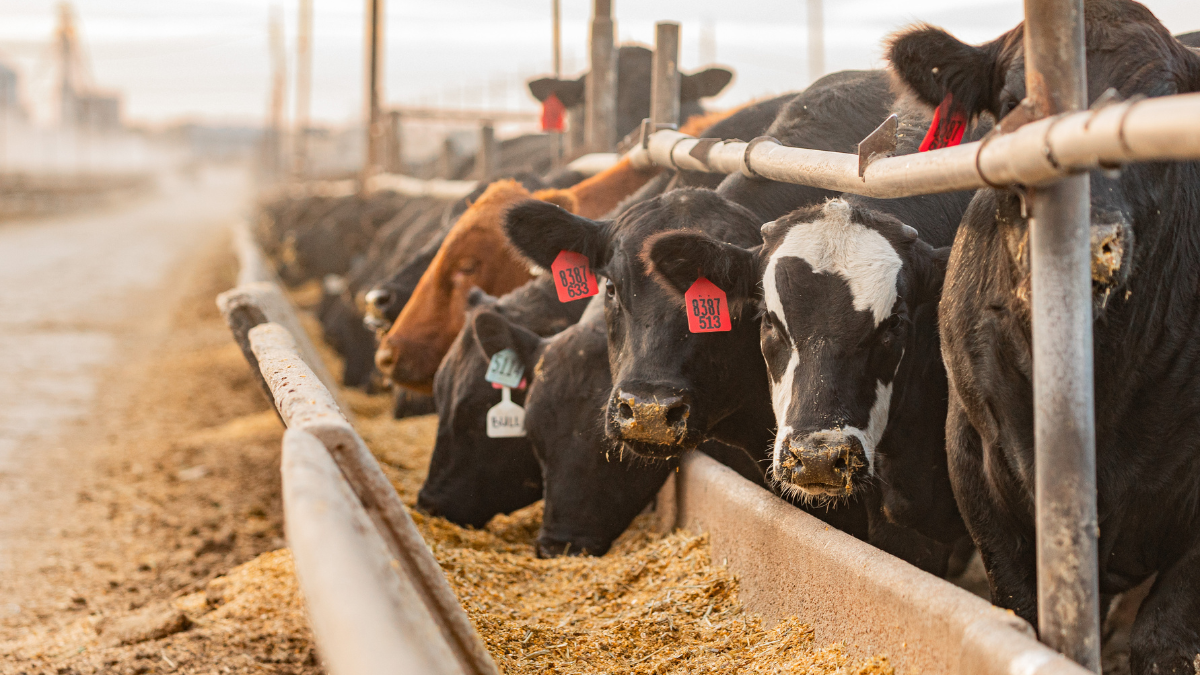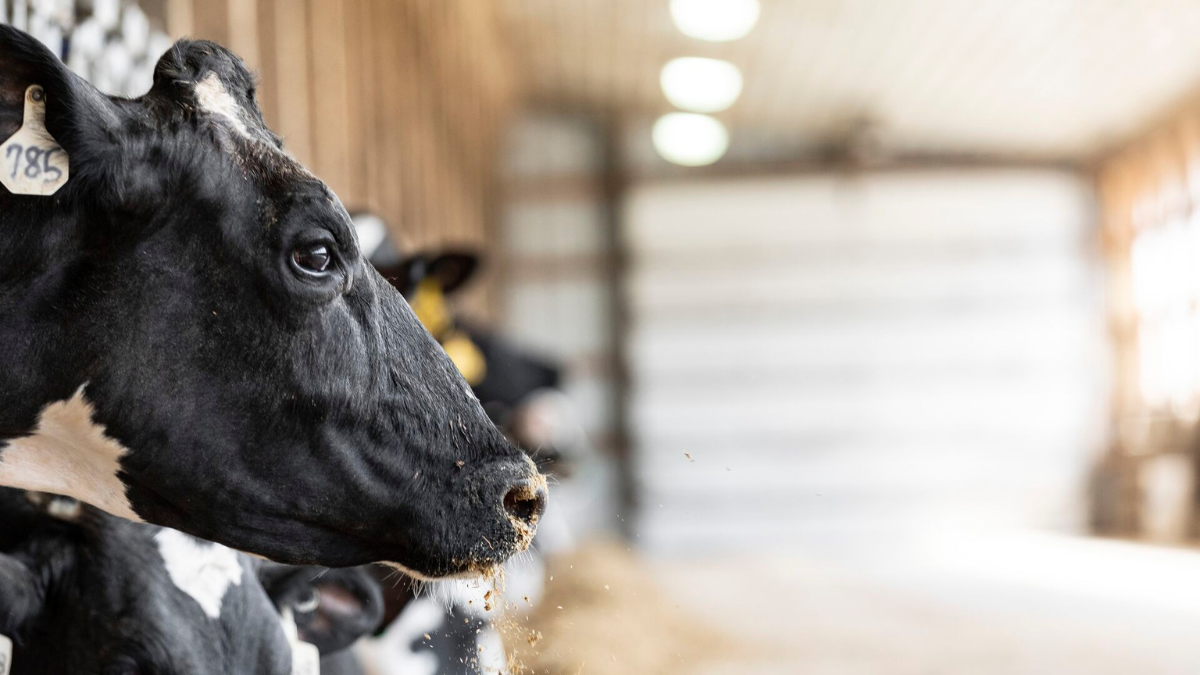The truth about sustainability in agriculture: Ag experts speak at World Pork Expo
If you ask any farmer or producer about their greatest challenges, one issue is sure to appear near the top of their list: how to share agriculture’s vital role in feeding the world and combating climate change with consumers. With misinformation and mixed messages about agriculture often making headlines, how can those on the front lines of ag connect with the rest of the world about sustainability in a way that truly resonates?
This question and many others were top-of-mind for attendees at the 2024 World Pork Expo, held in Des Moines, Iowa, in early June. Presented by the National Pork Producers Council, World Pork Expo brings together pork producers to discuss the latest challenges, opportunities and innovations for the sector through a tradeshow, educational seminars, presentations, networking events and more.
One panel discussion in the business seminar focused on sustainability and the importance of communicating effectively about agriculture’s commitment to improving it. The panel, moderated by Mark Hulsebus, sales and portfolio director at Alltech, featured:
- Dr. Mark Lyons, president and CEO of Alltech
- Dr. Frank Mitloehner, professor and director of the CLEAR Center at the University of California, Davis
- Dr. Gordon D. Spronk, member of the National Pork Board and emeritus chairman of the board of directors at Pipestone
- Maria Zieba, vice president of government affairs at the National Pork Producers Council
The conversation began with an acknowledgement that the word “sustainability” carries a lot of weight — but that it is possible to see sustainability differently through the lens of another word: stewardship.
“I know there are many producers who have a beef, so to say, with the term sustainability,” said Mitloehner. “But I just want to propose the following: ‘Sustainability’ and ‘stewardship’ are pretty much the same thing.”
“If you think ‘sustainability’ is a curse word,” he added, “get over it. You should own it. You should be proud of it, because it should be your farm’s legacy. Don’t hide behind it. The world wants it. Why not showcase it?”
Being a good steward of the land and taking care of animals are top priorities for every farmer and producer.
“Who would say, ‘I don’t want to be the best steward of those animals, their welfare and health’?” Mitloehner asked. “We all want to be the best stewards — and by pursuing (sustainability), we are working on our legacy.”
Spronk said the concept of stewardship has always been fundamental to agricultural production — and the key now is to illustrate that to consumers in a tangible way.
“My grandfather never knew the word ‘sustainability,’ but he knew ‘stewardship’. He knew from his worldview that the land he owned and the animals he took care of were temporary,” said Spronk. “For us at the farm level, we understand stewardship; it’s doing the right thing every day, including for the land. And now it just seems like society is asking us to prove it. We need the data.”
The available data bears proof of the agriculture industry’s efforts to transform and improve. As Mitloehner explained, emissions from animal agriculture have been roughly stable since 1990, and farmers are making major impacts on the environment by utilizing anaerobic biodigesters, reducing methane emissions and implementing other environment-friendly management practices.
“When I look at all the data from 30, 20, 10 years ago versus today, the progress is amazing,” he said.
Spronk highlighted the widespread interest in access to these data points, which many farmers and producers are able and excited to provide.
“We have the best agricultural system in the world, and our competitors are now asking, ‘Well, prove it,’” he noted. “I think we’re fully capable of proving that through primary data to answer questions at both the policy level and the consumer level. We can specifically answer questions about our contribution to greenhouse gases, our contribution to carbon, our soil erosion rate.”
Zieba concurred — and encouraged the sector to share that data with others.
“We’re in a new world where people do want to talk about sustainability, and they want to know what the metrics are,” she said. “We have a great story to tell. People are surprised that we have such a good story to tell. And I think producers should be really happy that we have that story.”
The experts on the panel all agreed, however, that the act of telling that story is where the agriculture industry has sometimes fallen short.
“You have the trust (in agriculture), but the messaging hasn’t been trickled out to enough people,” said Zieba. “I think that’s one of the biggest issues — because we have the data, we have the information, but it’s also how you message things. You can’t bombard people with facts.”
Lyons suggested that meeting the consumer where they are and sharing information about agriculture in new and surprising ways could be the key to changing the narrative.
“One of the seven values of Alltech is telling the story,” he said. “I think it’s interesting to try engage with people (over) the things that they like to do.”
Lyons also recommended that highlighting the crucial role of agriculture in feeding the world will be key to engaging with consumers more successfully.
“This industry is the industry that’s going to save the planet,” he said. “And I think that’s going to be the piece that we build upon. We just have to keep telling the story, because it takes a while for it to sink in.”
Alltech shares about agriculture’s vital role in feeding the world and combating climate change in numerous ways, including sharing sustainability stories on its Working Together for a Planet of Plenty™ website, through podcasts and blogs, and at its annual Alltech ONE Conference. Alltech is also involved in a new documentary, “World Without Cows,” which offers a scientific look at the cultural, economic and environmental impact of cattle on our world.
Mitloehner recalled a piece of advice from his father that farmers and producers would be wise to consider: Do good things and to talk about them.
“Let’s not forget about the second part of that sentence,” he added. “Because we are doing a lot of good things, and now we have to find out how to quantify it appropriately, how to communicate it effectively, how to get it into the heads of people who make decisions. Because we have a great story to tell. It’s time that we’re telling it.”
- Read more about The truth about sustainability in agriculture: Ag experts speak at World Pork Expo
- Log in to post comments
